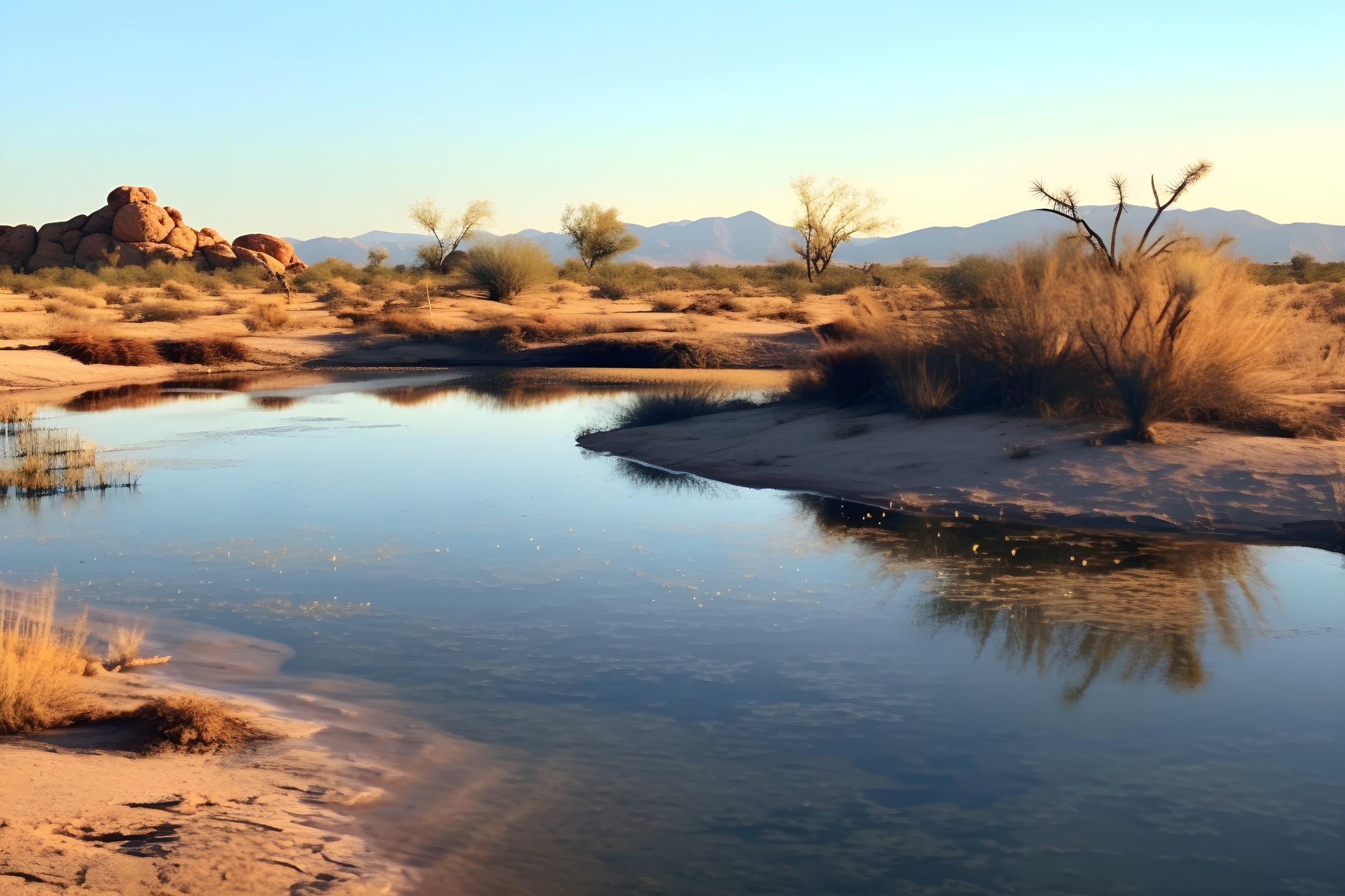
Heavy Rain, Flooding, and Chance of Severe Weather Staring Down the Southern U.S.
January 22, 2024
Posted: October 31, 2023 9:45 am





What is typically the driest place in all of North America is now littered with lakes thanks to last summer’s Hurricane Hilary. The rainfall associated with this storm system has turned California’s Death Valley from a desert landscape into a part oasis thanks to the excess water. How long will this display of the power of Mother Nature linger in the park? Read on for the details.
Hurricane Hilary Pounds Death Valley With Record Amounts of Moisture
This part of the desert is known for its arid landscape. However, the normally dry ground now features ponds, streams, and a salt flat that has transformed into a large lake. Visitors have been flocking to Death Valley to check out this rare sight that happens about once every 10 years.
Hurricane Hilary roared through the Golden State during the third week of August. Death Valley picked up 2.2 inches of rain as a result of the storm. This amount was equal to about what the park would normally see over the course of an entire year. August 20 also ended up being the wettest day in the history of Death Valley National Park. According to records that go back over 100 years, the park has never seen more than 2 inches of rain in one day, speaking to the rarity of this event.
The dry ground could not take in all of this precipitation at once, leading to a massive flash flooding disaster. The unleashing of this water destroyed hiking trails, damaged roads, and left the park in a state of disarray.
The impacts were so significant that park officials were forced to close the area from late August through the middle of October. When the park finally reopened to visitors, it had been the longest closure in its history.
Even now, the park is just partially reopened as crews work on repairing the rest of the damage. This means that some of the waterways that formed are not visible to tourists.
Impacts of Hurricane Hilary on the California Desert
The most stunning development was the flooding that pooled in the Mesquite Flat Sand Dunes. This water has since receded, leaving behind dry mud cracks as the only visible reminder of the mass flooding event.
The deluge of water also triggered the early bloom of wildflowers growing throughout the park. Unfortunately, many of these blooms are located in remote parts of the park that most people do not visit.
One sight that is still available for public viewing is the temporary lake that formed in Badwater Basin. This basin is the lowest point in North America, according to data from the National Park Service (NPS). At its deepest levels, Badwater Basin dips to 282 feet below sea level. As a result of this low elevation, it is not surprising to learn that the basin was able to take in a good amount of floodwater and hold onto it. A large amount of the water that filled the basin when Hilary pushed through the park is still trapped.
The water in the basin was estimated to be about one foot deep one month after Hilary’s landfall. Over two months later and this depth can be measured in a few inches, meaning that it is almost gone.
The weather in the immediate future will influence how quickly the basin dries up entirely. Warmer temperatures will naturally lead to a faster evaporation rate. However, it is important to note that this is the time of the year when the high temperatures begin to nosedive across this desert landscape.
For instance, Death Valley is forecast to see highs that hover in the 80s this week before dropping into the 70s as November gets underway. These cooler temperatures will work to slow down the evaporation rate and keep the water lingering a bit longer.
Until then, this is the time to get out and check out the rare lakes that have formed across the desert of Death Valley. You never know how long this sight will stick around.
Did you find this content useful? Feel free to bookmark or to post to your timeline for reference later.

January 21, 2024

January 19, 2024

January 18, 2024